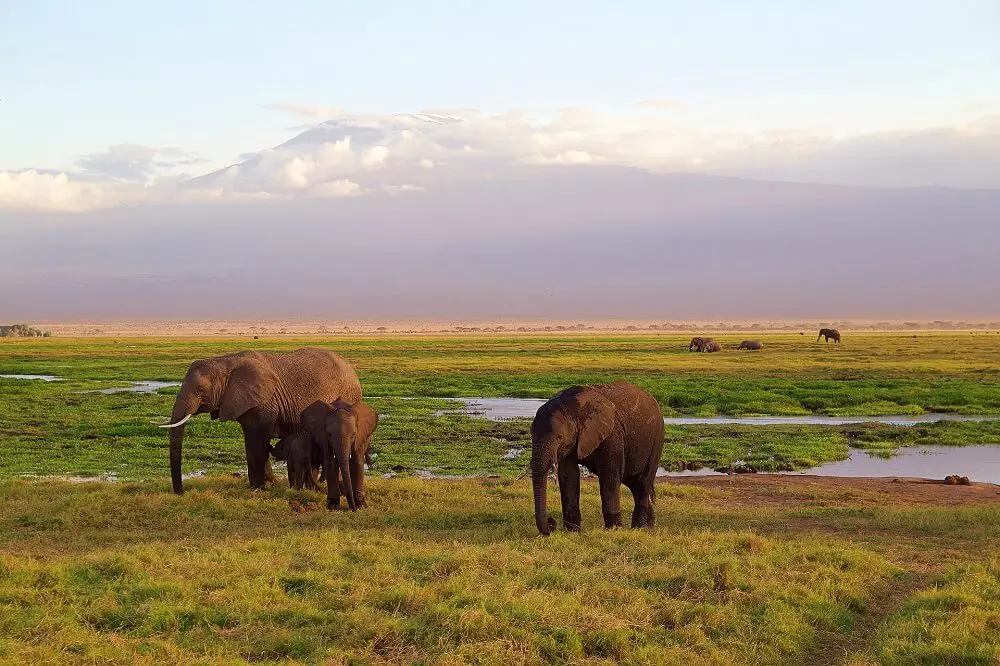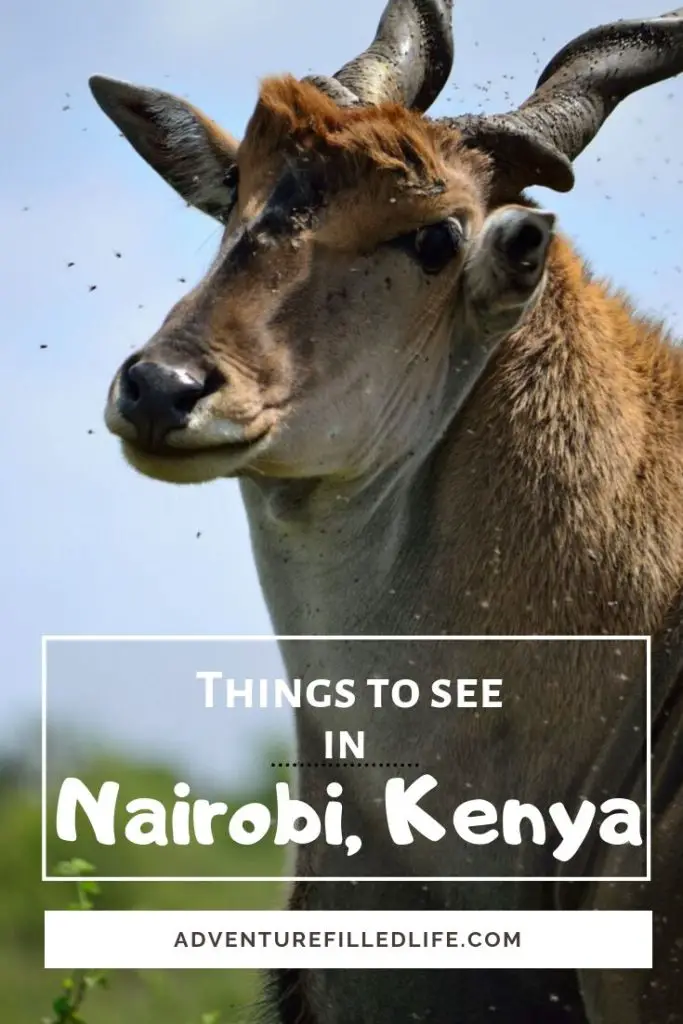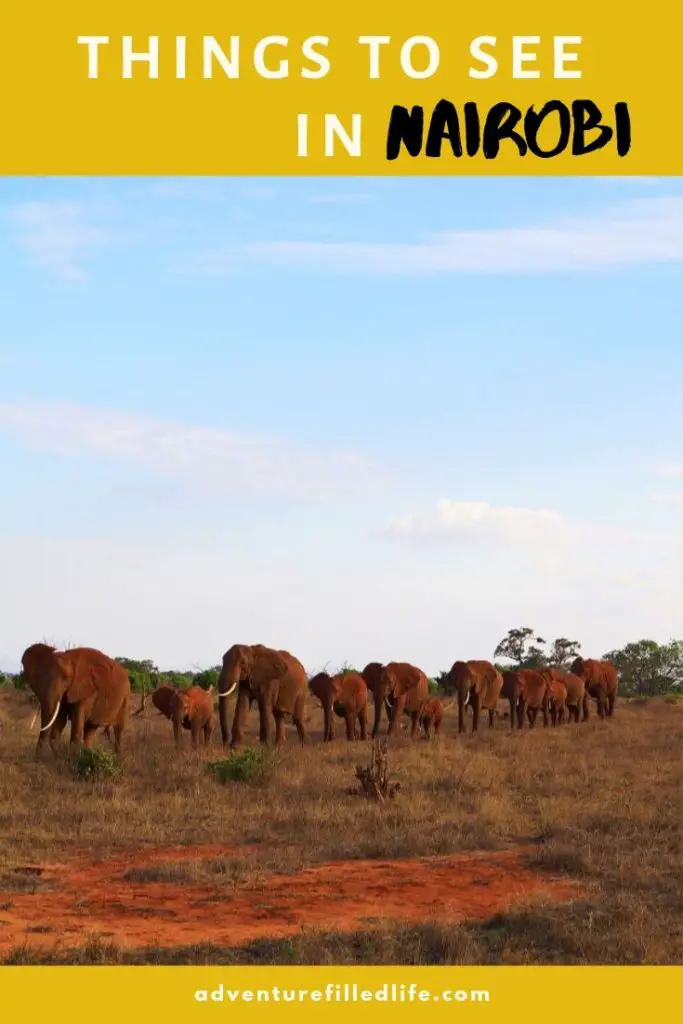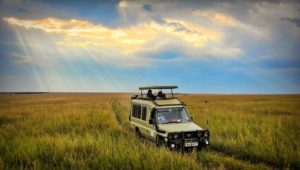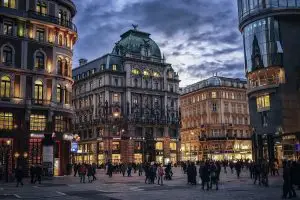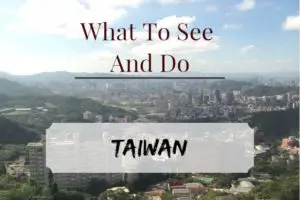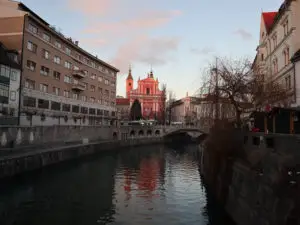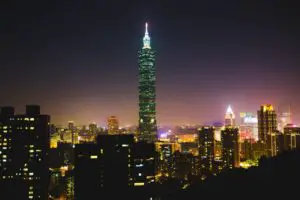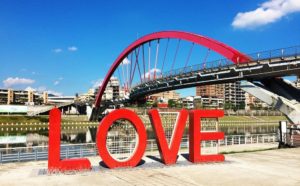10 Best Things To See In Nairobi, Kenya
Nairobi has been and will always be a place of sanctuary and is remembered fondly by those who have had the chance to visit. It’s a city that will remind you of its beauty long after your tour in paradise is over.
Nairobi has many interesting spots and hidden treasures that you will surely enjoy visiting. The museums, forests, parks, and exotic animals will likely be enough to spark the interest of even the pickiest traveler. If food is more your thing, you will be happy to learn that Kenya is home to some of the tastiest delicacies around – Nyama Choma, Kenyan Stew, and too many tasty rice dishes to count. Make sure they all find a way onto your Nairobi travel itinerary!
Oh, and let’s not forget to mention the picnics. You might not think so but Nairobi is an excellent place for a picnic. There is nothing better than spending a lazy day relaxing outdoors and soaking in the African sun. It’s a cheap and fun thing to do while in Nairobi.
Nairobi is far from just a boring capital city and actually ranks among the best places in Kenya to visit.
Be sure to check out this useful list for a full list of Nairobi museum admission prices
Nairobi National Park
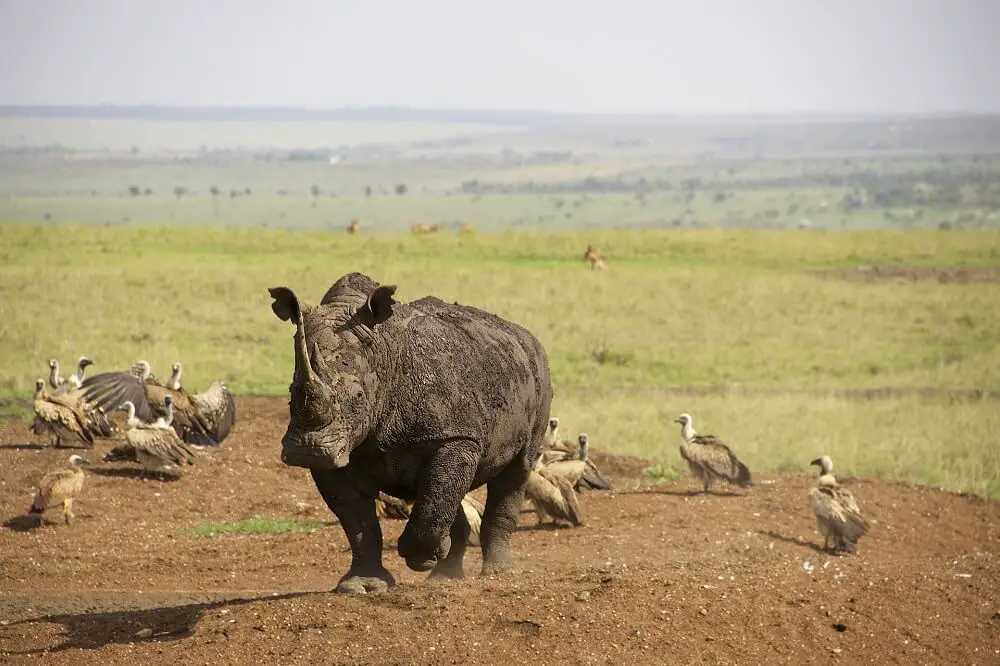
Nairobi National Park is conveniently located in the capital of Nairobi and is one of the best National Parks in Kenya. The national park is connected to the southern part of the city and really brings the feeling of Kenya into the city. Where else can you get panoramic views of exotic wildlife from your office building? Nairobi has been developed up to the edge of the Nairobi National Park and the protected edge of the park is lined by many tall buildings. This means there will be plenty of chances to capture the perfect panorama while in Nairobi.
The national park is covered with scattered acacia trees and a wide variety of well-known wildlife. Nairobi National Park is home to African animals like cheetahs, giraffes, elands, buffaloes, hyenas, as well as countless other animals and birds. Another great thing to mention is that the park is a breeding ground for the endangered Black Rhino. If you’re lucky you might even catch a glimpse of a newborn!
Visitors will enjoy the park’s picnic sites, three campsites and the walking trails designed for hikers in Nairobi National Park. Plan on spending at least a half-day in the park to spot some of Kenya’s greatest animals. And after, turn your camera to catch Nairobi’s skyline which is visible from the park.
Nairobi National Park Hours: 6am – 7pm
Nairobi National Park Cost: $43 Adults / $22 Children link
Nairobi National Museum
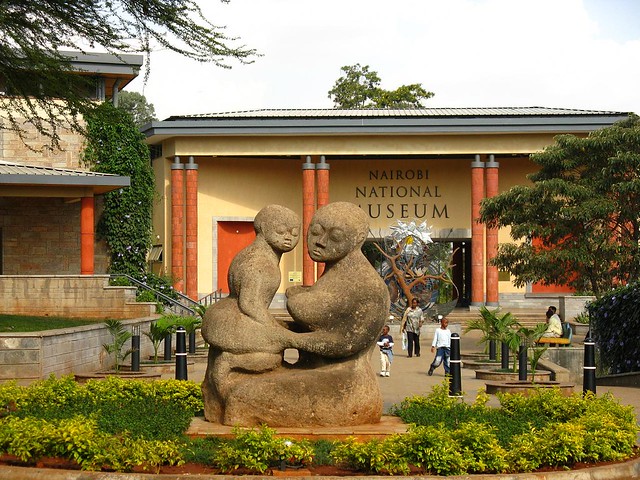
Kenya has a long and interesting history that encompasses everything from human pre-history to the founding of modern Kenya. If you’re in Kenya you likely know some of this history already. However, there is still so much left to learn. The chance to discover more of Kenya’s history at Nairobi National Museum is more than enough of a reason to pay a visit if you’re a history lover. In addition to this, the displays covering paleontology, art, culture, and life in Africa will draw the attention of other guests. The museum was founded in 1910 as a way to showcase the collections of natural artifacts and includes a large collection of taxidermied birds and mammals that are endemic to the region.
The Nairobi National Museum is the place to go if you want to gain a deeper insight into the Art, Culture, and History of Kenya.
The museum prides itself on remaining open for an astounding 356 days each year. You won’t need to worry about fitting an erratic opening schedule into your itinerary as the Nairobi Natural Museum almost never closes!
Nairobi National Museum Hours: 8:30am – 5:30pm
Nairobi National Museum Cost: $12 Adults / $6 Children
The Giraffe Centre / Giraffe Manor
How interesting would it be to come face to face with a rare and endangered Rothschild’s giraffe?
The Giraffe Center in Nairobi is the place to go if you want to see a giraffe up close. They provide a sanctuary for this endangered species of giraffe and has celebrated many new births at the center. Once finished with the main area, head for the hiking trails where you can see giraffes and birds on your 1.5km hike.
Spending a night at Giraffe Manor is something to seriously consider if you have the funds available to book a stay in this wonderful place. But be warned, a stay here doesn’t come cheap. Expect to pay upwards of $1600 on a room provided one is even available. This once-in-a-lifetime resort that has probably popped up on your Instagram feed before.
Let’s admit it, we’ve all spent time ogling over these kinds of photos and dreaming of the day we will be able to visit.
Giraffe Manor also gives you a chance to feed the giraffes at an eye level with food pellets – a nice treat for the giraffes. Enjoy self-guided forest walk in the adjacent nature reserve after a friendly interaction with these long-necked and equally long-lashed beauties!
Please note that at the Giraffe Center cash payments are not accepted at the on-site ticket counter! Make sure you travel with a credit card – preferably one with no foreign transaction fees!
The Giraffe Centre Hours: 9am – 5pm
The Giraffe Centre Cost: $15 Adults / $7.50 Children
The Sheldrick Elephant and Rhino Orphanage
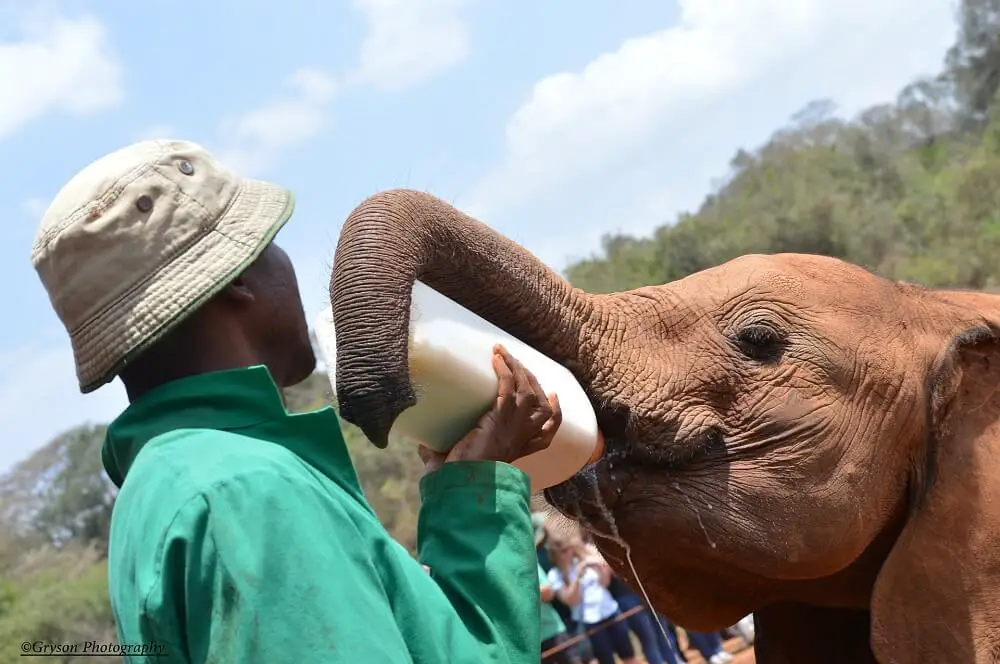
This is the place to go if you want to know more about how orphan elephants are raised. The elephants here have been orphaned due to conflict and poaching. It’s actually a very sad situation, but it’s good to see that they are cared and given a chance to survive. The roly-poly baby elephants are fed with oversized baby bottles that match their stature. When visiting you can see them run around the compound and play in a curious, yet cautious manner.
The Sheldrick Elephant Orphanage is open to visitors for 1-hour every day, from 11am to noon. The short period is effective at limiting the number of visitors per day and allowing the keepers to focus on raising the elephants to adulthood before integrating them back into the wild.
Don’t worry about only seeing the elephants for an hour. The visiting hours correspond to their feeding time and is actually the best time to see the elephants.
In addition to elephants, there are also a number of rhinos under the care of workers at The Sheldrick Elephant Orphanage. They might not get as much attention, but I personally think baby rhinos are equally adorable!
Where is the Sheldrick Elephant Orphanage located?
The Sheldrick Elephant Orphanage is located in the western part of Nairobi National Park.
Sheldrick Elephant Orphanage Hours: 11am – 12pm
Sheldrick Elephant Orphanage Cost: A $7 minimum donation is requested
Uhuru Gardens

Enjoy the largest memorial park in Kenya. Uhuru means “freedom” in Swahili and was built to commemorate Kenya’s independence from the United Kingdom. It holds memories of Kenya’s remarkable history and events like the inaugural ceremony of President Jomo Kenyata.
The park holds a 24-meter tall monument which depicts Kenya’s struggle for independence. On the other side is a statue of freedom fighters raising the Kenyan flag. This is significant as the Uhuru Gardens were built at the location where the first Kenyan flag was raised!
The park is a great place to take a walk or go for a run. Staying in shape while traveling is not always easy so it’s best to take the opportunity to exercise when you can! There are a number of other monuments and fountains scattered around the park, but make sure you at least stop by the main two.
Uhuru Gardens Hours: 8am – 6pm
Bomas of Kenya

The Bomas of Kenya provides a slice of what life is like for Kenya’s tribes. There are a number of tribes whos traditional villages are displayed here.
This is a miniature view of Kenya that lets you see and experience a selection of Kenya’s diverse cultures. It’s a place where lifestyles, crafts, arts, music, and dancing are displayed in accordance with different Kenyan cultures. The various cultural groups represented here are well preserved, promoted, and maintained.
The history and traditions of ethnic tribes from all over the world are at risk of being lost so it is nice to see them being preserved here. This is one of the stops that I’d recommend for any Nairobi itinerary.
Bomas of Kenya Hours: 8am – 5pm
Bomas of Kenya Price: $10 Adults / $5 Children
Karen Blixen Museum
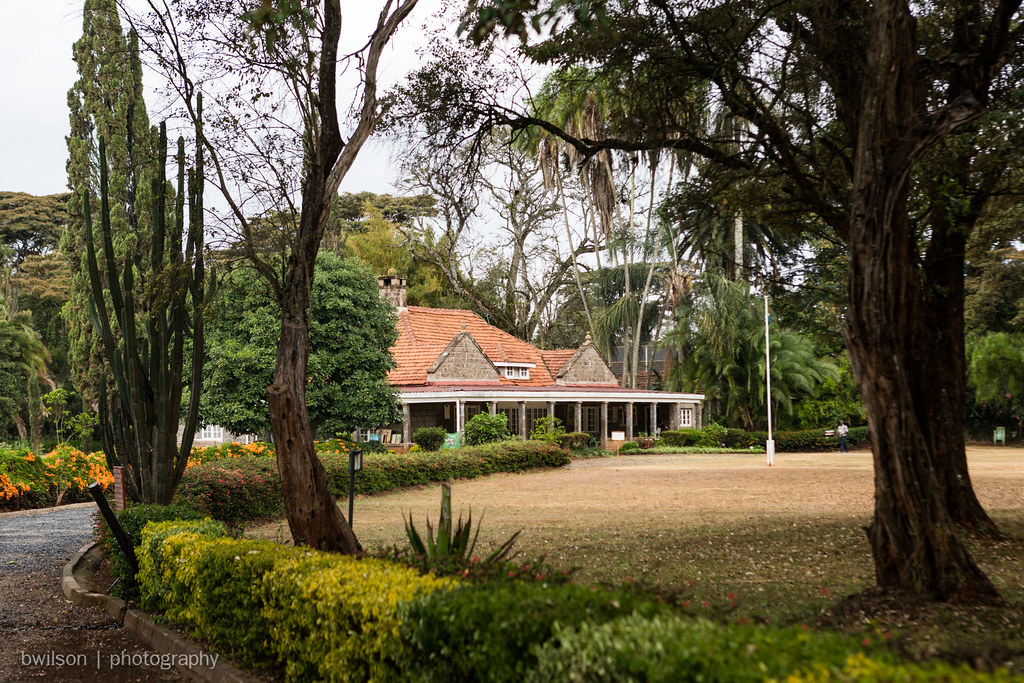
This museum can be found at the foot of Ngong Hill on the outskirts of Nairobi. The museum is housed in an old farmhouse where the author Karen Blixen lived in the early 1900s. Her popular book Out Of Africa was written from her time spent here in the farmhouse. The book has captured the minds of countless readers over the decades and is absolutely worth reading before your trip to Kenya. It gives a good account of a life in Kenya that no longer exists today.
There are many remnants of the original coffee plantation that can be seen today. Also, many of the rooms are styled according to the early 1900s time period and are decorated to match. You can have a look at handicrafts and purchase souvenirs in the gift shop. After touring the museum there are some types of wildlife worth seeing at Ngong Hill. Buffalo, gazelles, giraffes, and troupes of baboons are often seen grazing along the roadside.
Karen Blixen Museum Hours: 8am – 5pm
Karen Blixen Museum Price: $12 Adults / $6 Children
Kazuri Bead Factory and Pottery Center
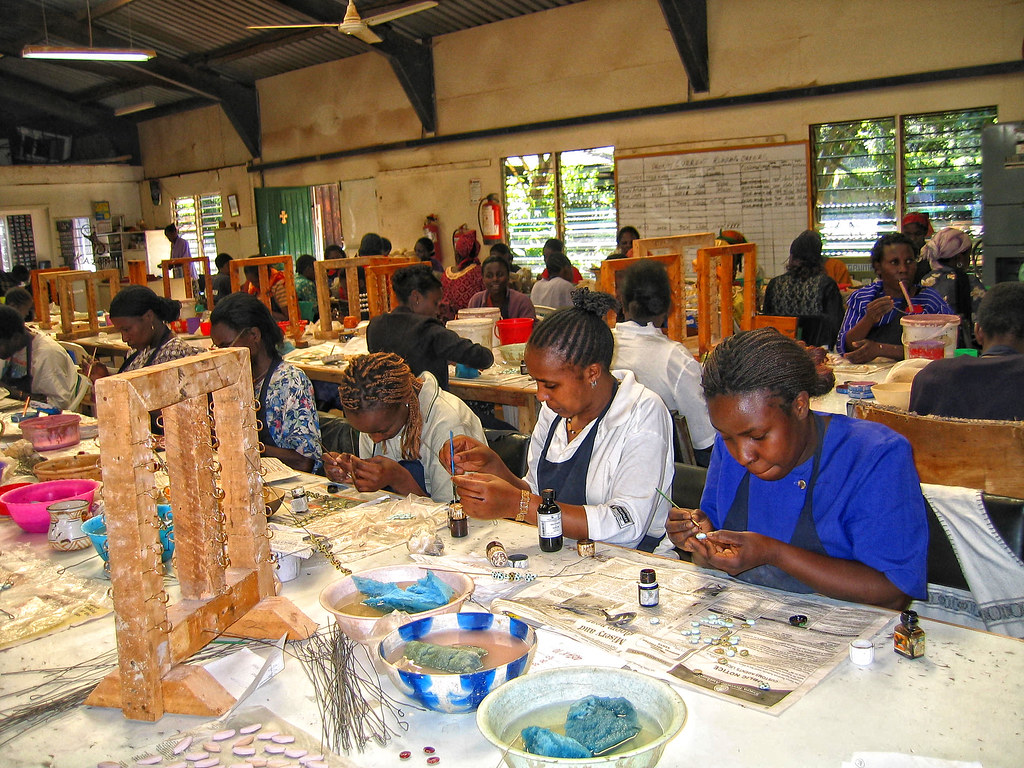
This is a great stop for those who love local crafts and artwork. This is the place to go if you are interested in beads, leather goods, and pottery. Walk around the factory and have a look at recently made pots and beads being glazed and fired before they go on sale.
The factory is a large employer of single mothers who craft beautiful jewelry that is sold around the world. Know that any purchases made here are directly helping to improve the lives of those who need it the most.
Kazuri Bead Factory Hours: 8am – 5pm (closed Saturday and Sunday)
Kazuri Bead Factory Price: Free – but most will end up making a purchase
Karura Forest
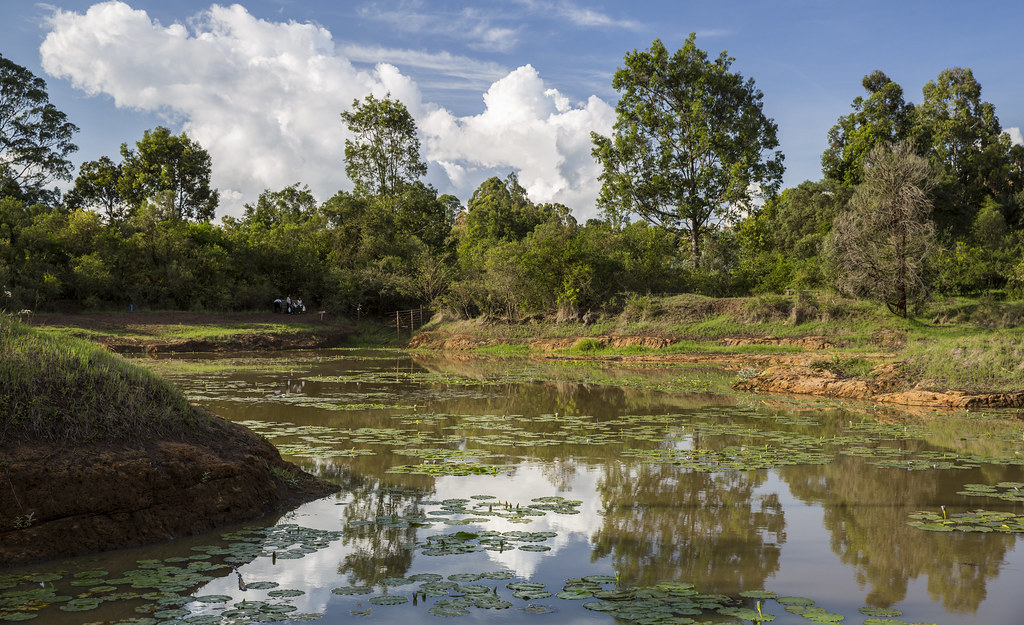
Karura Forest is an awesome place to jog and go for a walk while in Kenya. It covers a massive area of 2,500 acres so plan on spending a good deal of time here if you want to get a good idea of what the forest has to offer. In the forest, you can find a volcanic rock that is estimated to be 1 million years old. A variety of indigenous Kenyan animals like the bushbuck and big-eyed bushbaby can be seen here.
The Karura Forest also holds the remains of Kenyans who struggled for independence. You can also stop and take photos at one of the many waterfalls scattered around the park. You won’t regret visiting this Karura Forest!
There are over 50km of hiking trails covering vast areas of the forest. This is perfect for hiking and nature enthusiasts. While you’re out on the trails take a look and see how many wild animals you can spot!
Note: Guides can be hired at the park entrance. Expect to pay $3 for 2-hours.
Karura Forest Hours: 6am – 6pm
Karura Forest Price: $6 Adult / $3 Child
Kibera Slums

This has been added to the list due to recommendations from Kenyan friends, but I do have my reservations. Decide carefully before visiting especially if you visit the Kibera Slums alone. This is one of the largest shanty-towns in the world with over 1-million residents. Roughly 80% are unemployed and most live without electricity. If you plan on visiting it would be a good idea to go with a local friend. The area is safer than you might expect, but precaution is always advised.
With that out of the way, there are a few reasons why you might want to visit Kibera. One of the interesting points is how so many people from various tribes are able to comingle together without their differences in identity, religion, and beliefs getting in the way. There is certainly something to learn from that. Experiencing true poverty up close is a tough thing that will change your perspective on a lot of things.
Corina and I have visited slums before such as Sim Sim Village in Sandakan. It’s always a challenging experience and not something I’d recommend to everyone. The most important thing is to be respectful. This is not a zoo – even though some large tour groups will treat it as such. Another reason I’d recommend visiting with a Kenyan friend or resident guide. Talk to the locals, ask before you take photos, and support local businesses if possible.
Despite the living conditions, education in Kibera is actually good. Children’s education is highly prioritized as it is the only path to a better life. Because of this, everyone here can speak fluent English and will be able to communicate with you. Expect the majority of people to be exceptionally friendly and curious.
Finally, there are a number of shops at the Kibera Slums selling snacks or fried food. Consider supporting them with a purchase as this is the only means of income for the residents who are lucky enough to have a job.
Planning Your Trip To Nairobi
Planning a trip to Nairobi is no easy task! There is a wealth of information online and more things to see and do in Nairobi than one could ever manage.
We hope this list of things to do has sparked some interest in visiting Kenya’s capital and given some insight on what to do and the costs.
Question: What is the best thing to do in Nairobi?
Thank you for sharing on Pinterest!

